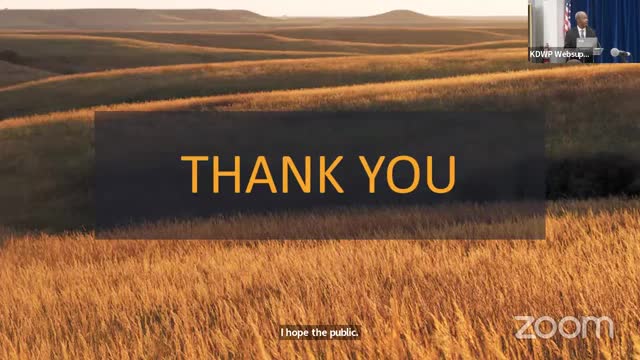Kansas Wildlife Agency Celebrates Century of Conservation Success
October 03, 2024 | Department of Wildlife & Parks, State Agencies, Organizations, Executive, Kansas
This article was created by AI summarizing key points discussed. AI makes mistakes, so for full details and context, please refer to the video of the full meeting. Please report any errors so we can fix them. Report an error »

In a recent meeting of the Kansas Department of Wildlife and Parks, officials highlighted the significant role of hunters and anglers in wildlife conservation, tracing the history of these efforts back to the late 19th century. Deputy Secretary of Operations Stuart Shrog emphasized the importance of the North American model of wildlife conservation, which has been instrumental in restoring various species, including bison, white-tailed deer, and wild turkeys.
Shrog noted that the agency is celebrating the 100-year anniversary of its commitment to bison conservation, a species that faced near extinction with fewer than 500 individuals in North America at the turn of the century. Today, Kansas boasts over 6,000 bison, showcasing the success of these conservation efforts. He also reflected on the evolution of deer hunting in the state, where regulations have shifted to allow over-the-counter permits, making hunting more accessible to residents.
The meeting underscored the historical context of wildlife conservation laws, including the Migratory Bird Treaty Act and the Pittman-Robertson Act, which have provided essential funding for wildlife management. Shrog explained that the North American model operates on seven principles, including the public trust doctrine, which asserts that wildlife is a public resource managed for the benefit of all citizens.
The public trust doctrine establishes the government's responsibility to protect wildlife and ensure public access for activities like hunting and fishing. Shrog urged the department to adhere to these principles, emphasizing that wildlife management should be guided by scientific knowledge rather than personal interests.
As the agency moves forward, it aims to enhance public awareness of its services and the vital role of its staff in conservation efforts, ensuring that the legacy of wildlife protection continues for future generations.
Shrog noted that the agency is celebrating the 100-year anniversary of its commitment to bison conservation, a species that faced near extinction with fewer than 500 individuals in North America at the turn of the century. Today, Kansas boasts over 6,000 bison, showcasing the success of these conservation efforts. He also reflected on the evolution of deer hunting in the state, where regulations have shifted to allow over-the-counter permits, making hunting more accessible to residents.
The meeting underscored the historical context of wildlife conservation laws, including the Migratory Bird Treaty Act and the Pittman-Robertson Act, which have provided essential funding for wildlife management. Shrog explained that the North American model operates on seven principles, including the public trust doctrine, which asserts that wildlife is a public resource managed for the benefit of all citizens.
The public trust doctrine establishes the government's responsibility to protect wildlife and ensure public access for activities like hunting and fishing. Shrog urged the department to adhere to these principles, emphasizing that wildlife management should be guided by scientific knowledge rather than personal interests.
As the agency moves forward, it aims to enhance public awareness of its services and the vital role of its staff in conservation efforts, ensuring that the legacy of wildlife protection continues for future generations.
View full meeting
This article is based on a recent meeting—watch the full video and explore the complete transcript for deeper insights into the discussion.
View full meeting
